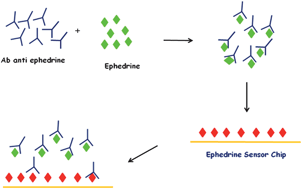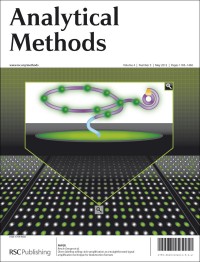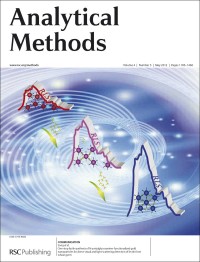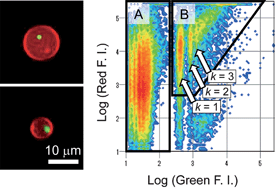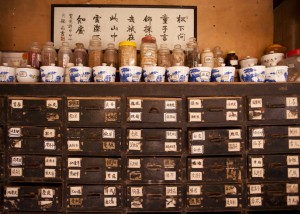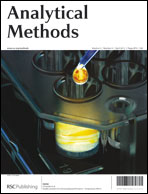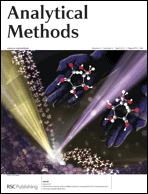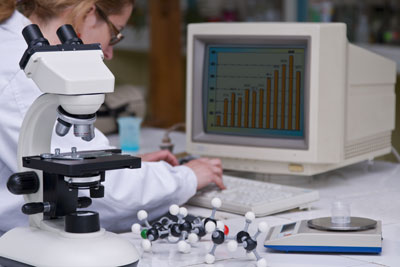 Used particularly heavily in analytical chemistry and metabolomics, ‘chemometrics’ is the science of using mathematical or statistical methods to extract information from a chemical system. Beginning in the 1970s with the emergence of computer driven scientific investigation, chemometrics frequently uses methods found in applied mathematics, computer science and statistics.
Used particularly heavily in analytical chemistry and metabolomics, ‘chemometrics’ is the science of using mathematical or statistical methods to extract information from a chemical system. Beginning in the 1970s with the emergence of computer driven scientific investigation, chemometrics frequently uses methods found in applied mathematics, computer science and statistics.
Analytical Methods presents an excellent forum for such work, and below is a sample of the high-quality work we have published in this area. These articles are free to access until 21st June 2012 so make the most of this opportunity and take a look!
Determination of flavor components of rice bran by GC-MS and chemometrics
Maomao Zeng, Liangxiao Zhang, Zhiyong He, Fang Qin, Xueyan Tang, Xiaolin Huang, Honghong Qu and Jie Chen
Anal. Methods, 2012, 4, 539-545
DOI: 10.1039/C2AY05671B
Rapid measurement of antioxidant activity in dark soy sauce by NIR spectroscopy combined with spectral intervals selection and nonlinear regression tools
Qin Ouyang, Jiewen Zhao, Quansheng Chen, Hao Lin and Zongbao Sun
Anal. Methods, 2012, 4, 940-946
DOI: 10.1039/C2AY05766B
Quantitative monitoring of the progress of organic reactions using multivariate image analysis-thin layer chromatography (MIA-TLC) method
Bahram Hemmateenejad, Morteza Akhond, Zahra Mohammadpour and N. Mobaraki
Anal. Methods, 2012, 4, 933-939
DOI: 10.1039/C2AY25023C
Multi-response optimization of sequential injection chromatographic method for determination of lisinopril and hydrochlorothiazide
Abubakr M. Idris, Salih A. Naheid, Rafea E. E. Elgorashe, Mohamed A. H. Eltayeb and Ahmed O. Alnajjar
Anal. Methods, 2012, Advance Article
DOI: 10.1039/C2AY05876F
 Application of multiway-variate calibration to simultaneous voltammetric determination of three catecholamines
Application of multiway-variate calibration to simultaneous voltammetric determination of three catecholamines
Yongnian Ni, Yi Gui and Serge Kokot
Anal. Methods, 2011, 3, 385-392
DOI: 10.1039/C0AY00445F
Multivariate calibration methods in near infrared spectroscopic analysis
Xueguang Shao, Xihui Bian, Jingjing Liu, Min Zhang and Wensheng Cai
Anal. Methods, 2010, 2, 1662-1666
DOI: 10.1039/C0AY00421A
Trends in process analytical technology
Wee Chew and Paul Sharratt
Anal. Methods, 2010, 2, 1412-1438
DOI: 10.1039/C0AY00257G
Measuring estriol and estrone simultaneously in liquid cosmetic samples using second-order calibration coupled with excitation–emission matrix fluorescence based on region selection
De-Zhu Tu, Hai-Long Wu, Yuan-Na Li, Juan Zhang, Yong Li, Chong-Chong Nie, Xiao-Hua Zhang and Ru-Qin Yu
Anal. Methods, 2012, 4, 222-229
DOI: 10.1039/C1AY05388D
Classification of polymer groups by means of a new polymer testing instrument, the identiPol QA, coupled with pattern recognition techniques
Bozena M. Lukasiak and John C. Duncan
Anal. Methods, 2010, 2, 1948-1957
DOI: 10.1039/C0AY00498G
A simple kinetic spectrophotometric method for simultaneous determination of tetracyclines by use of chemometrics
Yongnian Ni, Na Deng and Serge Kokot
Anal. Methods, 2010, 2, 1302-1309
DOI: 10.1039/C0AY00213E


